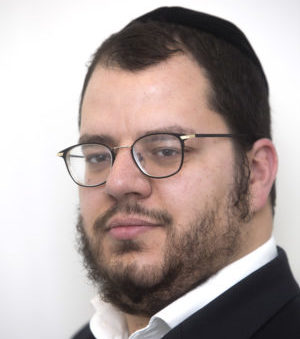Gate to Heaven

We were given an exalted task in this world, one that affects the worlds above us. When we do things in a Kabbalistic way, our actions look the same, but our intents are much deeper.

As I walk into a little room on the first floor of Yeshivas Shaar Hashamayim on this cool Jerusalem night, the first thing I hear is the sound of jangling coins. Looking around, I spot Rosh Yeshivah Rav Reuven Gross, who has invited me to enter this hundred-year-old sanctuary of Kabbalah; he’s surrounded by a minyan of elderly men, sitting in utter silence as they wait for him to continue. Rav Gross is now pronouncing various combinations of Divine Names to the accompaniment of those rattling silver coins — American silver dollars minted in the 1960s — putting down a coin for each Name. First are the Names of judgment, then the Names of mercy, and finally the names of two critically ill people who are the subject of their prayers. A tiny slip of paper is passed around, and when the coins corresponding to all the sacred Names have been put down, the mekubalim begin davening for the two patients from a pile of yellowed pages filled with combinations of Divine Names and supplications from other worlds.
Once the pidyon hanefesh ceremony concludes, Rav Gross, who leads the yeshivah together with Rav Yaakov Meir Schechter and Rav Gamliel Rabinowitz, is happy to talk about it — although he stresses that this is not what the yeshivah is all about. If someone is looking for a house of amulets, incantations, and mysticism, 71 Rashi Street isn’t the right address.
Still, there is a tradition, and Rav Gross explains the process. “When a person is deathly ill,” he says, gently introducing me to the world of mysticism, “the tzelem Elokim within him departs. In Sefer Tehillim, the pasuk says, ‘Only with the tzelem will man walk.’ In other words, the tzelem Elokim of a person is what holds his neshamah inside his body. The tzelem is what makes it possible for a person to live. A person who is ill must be given a new tzelem, in order to spare him from death. The Rashash [Rav Sar Shalom Sharabi ztz”l, an 18th century kabbalist and one of the greatest experts in kavanos (meditations)] revealed this tikkun, which is performed with 160 silver coins, since the gematria of the word ‘tzelem’ is equivalent to that of ‘kesef’ [silver]. Through tzedakah, which saves a person from death, the ill person receives a new tzelem and can continue living.”
The Rosh Yeshivah details the procedure: “First I recite the Names of judgment, and then I pronounce the Names of mercy. Thus, we ‘sweeten’ the judgment of the person who is ill, changing his fate from one of strict judgment to one of mercy. Through the mercy, he is cured.”
The Rosh Yeshivah, evasive about the success of this “treatment,” says he knows of one case where a comatose patient woke up. But later, an elder talmid at Shaar Hashamayim pulls me aside and whispers, “The Rosh Yeshivah is very modest, and he hasn’t told you everything. We’ve clearly seen wonders here, how people have been extricated from very difficult situations.”
The pidyon costs about NIS 800. The mekubalim who participate in the procedure receive NIS 20 for each name.
“The Rosh Yeshivah doesn’t usually perform tikkunim,” the talmid explains after Rav Gross makes his way upstairs to the main beis medrash. “He always stresses that the main parts of Kabbalah are its study and the special kavanos in davening. But the yeshivah has a history of performing tikkunim, pidyonei nefesh, and tikkunei almanah [a procedure from the Rashash for someone who wishes to marry a widow but is concerned that the deceased husband might resent the new marriage], so he occasionally continues these practices. He often jokes that he could open a stand at Kikar Shabbos and sell pidyonos from morning until night, but that is not our purpose. We are here to learn Kabbalah, not to perform miracles. Kabbalah and performing yeshuos are two different things, and believe it or not, these two areas never overlap.”
Unified in a Teacup
If you walk into Shaar Hashamayim’s beis medrash, you’ll likely find Rav Aharon Mordechai Rotner learning in solitude in the left corner. This unassuming man, one of the great Torah sages of Jerusalem, occasionally rises from his seat and makes his way to the tea station, where he prepares cups of tea for the other members of the group of mekubalim.
While it’s certainly beyond my comprehension, it seems that he infuses the preparation of the tea with sublime yichudim. In general, Rav Rotner drinks nothing but tea all year long, winter and summer. On Friday nights, after an exalted davening at the Kosel, he spends three hours learning the sefer Sidduro shel Shabbos together with his guests in his tiny apartment in Meah Shearim, and the group drinks nothing but tea. During the week, the only thing he eats is leftover challah from Shabbos. Every Friday, he stands next to the window and prepares fish in accordance with a certain mystical procedure, just as his rebbe, Rav Aharon of Belz ztz”l, used to do. Those in the know say there isn’t any part of the Torah with which he isn’t intimately familiar, yet whenever someone asks him a question about Kabbalah, he responds, “Nu, do you think I understand Kabbalah?”
Oops! We could not locate your form.






